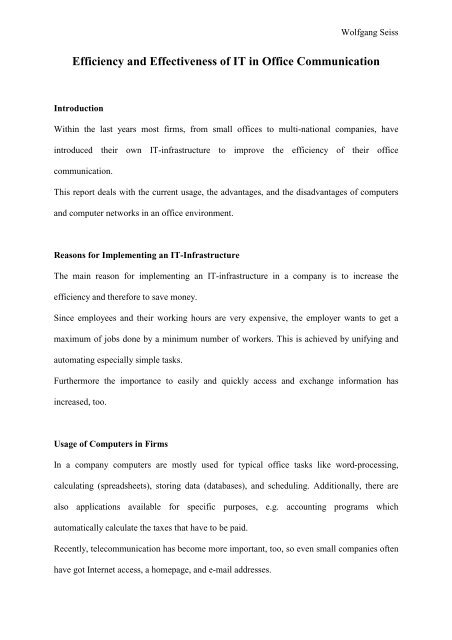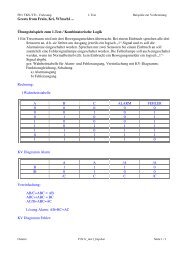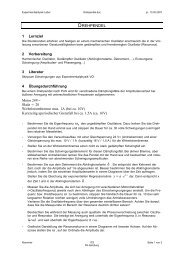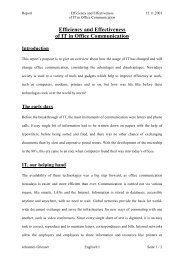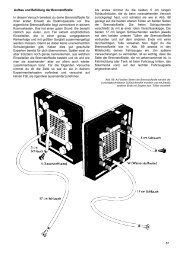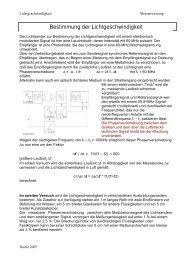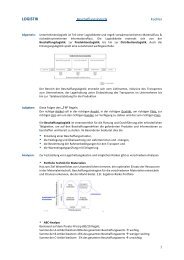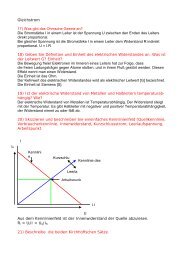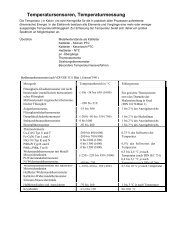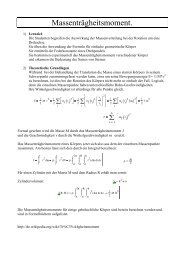Wolfgang Seiss
Wolfgang Seiss
Wolfgang Seiss
- No tags were found...
You also want an ePaper? Increase the reach of your titles
YUMPU automatically turns print PDFs into web optimized ePapers that Google loves.
<strong>Wolfgang</strong> <strong>Seiss</strong><br />
Efficiency and Effectiveness of IT in Office Communication<br />
Introduction<br />
Within the last years most firms, from small offices to multi-national companies, have<br />
introduced their own IT-infrastructure to improve the efficiency of their office<br />
communication.<br />
This report deals with the current usage, the advantages, and the disadvantages of computers<br />
and computer networks in an office environment.<br />
Reasons for Implementing an IT-Infrastructure<br />
The main reason for implementing an IT-infrastructure in a company is to increase the<br />
efficiency and therefore to save money.<br />
Since employees and their working hours are very expensive, the employer wants to get a<br />
maximum of jobs done by a minimum number of workers. This is achieved by unifying and<br />
automating especially simple tasks.<br />
Furthermore the importance to easily and quickly access and exchange information has<br />
increased, too.<br />
Usage of Computers in Firms<br />
In a company computers are mostly used for typical office tasks like word-processing,<br />
calculating (spreadsheets), storing data (databases), and scheduling. Additionally, there are<br />
also applications available for specific purposes, e.g. accounting programs which<br />
automatically calculate the taxes that have to be paid.<br />
Recently, telecommunication has become more important, too, so even small companies often<br />
have got Internet access, a homepage, and e-mail addresses.
<strong>Wolfgang</strong> <strong>Seiss</strong><br />
Advantages of Computers and Computer Networks in an Office Environment<br />
One major benefit of using computers and computer networks in an office environment is to<br />
save time. On the one hand this is achieved by using such applications as are listed in the<br />
previous section, on the other hand by implementing networks and networking services like<br />
an e-mail-system for easily and quickly sending messages and documents to other people.<br />
Another interesting possibility is the storage of all data on a server which allows everyone to<br />
access the latest information without the need to copy or mail a modified version of a<br />
document to anyone else.<br />
Disadvantages of IT-Systems<br />
Despite the many advantages of an IT-infrastructure, there are also some drawbacks.<br />
At first the employees must be taught how to work with the new system, and then it has to be<br />
ensured that they really use it and do not fall back to their old habits. A good example is the<br />
so-called “paperless office”, which has never come true, since people are used to printing<br />
documents out.<br />
Then most people who work with a computer have to sit the whole day in front of a screen<br />
which can lead to a disease.<br />
And, of course, the privacy aspect should be considered, too, on one hand for the company, as<br />
computer systems connected to the Internet may be a potential security risk, and on the other<br />
hand for the employee whose activities could be logged.<br />
Conclusion<br />
The efficiency of a company can notably be increased, if their IT-infrastructure is correctly<br />
installed and used. Today a firm without computers and a network is hardly imaginable, and<br />
the future trend is obviously towards the usage of more IT-systems in offices, although big<br />
changes of our working life have come along with it.


